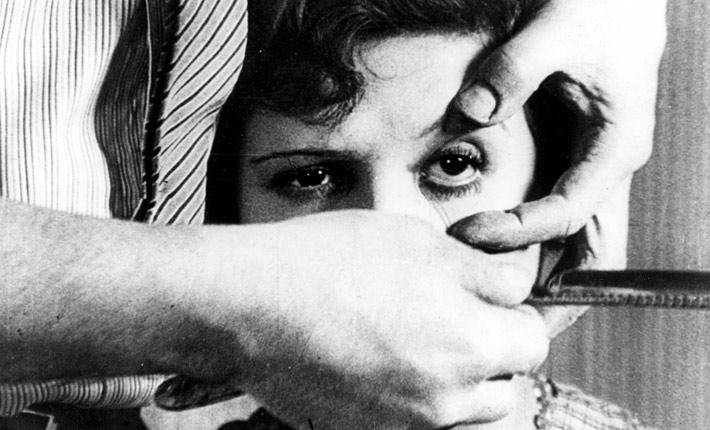
At what point in time does a form of expression become art? And who decides when it does? Perhaps it all entails having those working in a medium achieving a certain level of skill and expertise in rendering products in that medium and using it to express some cogent idea. Having many do this over a long enough time and it can become an art form.
It took long enough for film/cinema/movies to become any kind of art form. For many years it was first a toy, then a novelty, then some crude piece of popular show business promotion for financial reason, then, a more skillful and industrialized piece of business. The sad irony is that while all of this was evolving, there were a number of film makers who were going out of their way to make good products to little acclaim.
Did they call themselves artists? Most later on stated that they did not, that they were just exploring a new field and wanted to make better films for better business. This actually might point to the truer artist, since one might tend to suspect those who declare their artistry to be somewhat pretentious.
Perhaps because it is a continent with a long artistic history, Europe always seemed to take cinema a little more seriously as an art form than the US, overtly or not, and put in an extra artistic touch. While Hollywood was struggling to get past the nickelodeon stage, France, Scandinavia, Russia, and, most especially, Germany seemed to be finding fascinating ways to use the new medium which would bring a new maturity to the form (and Hollywood, at least in the silent days, was also quick to scavenge European talents).
Once sound arrived, the language barrier tended to segregate films along national lines and, in the U.S. ,caused such films to be seen in smaller theaters and film clubs (museums wouldn’t have been caught dead showing a movie in those days).
It’s a fact for which to be grateful that the film makers took their work more seriously than the world often took their medium, for their artistry has outlasted other’s obtuse snobbery. The following list contains a sampling, by no means definitive, of exceptional European films of that early time.
1. A Trip to the Moon (1902)
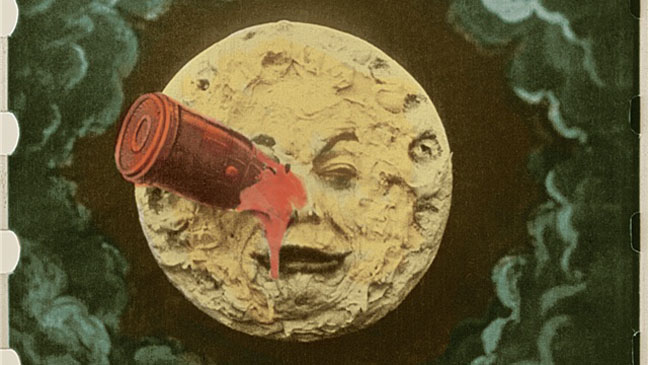
French illusionist Georges Melies (1861-1938) was a true showman and a visionary and saw potential in the toy-like new form of film which eluded so many others. Was he an “artiste”? No, he just saw film as another illusion and a great one at that.
The horizons truly opened when a jammed camera seemingly caused a horse and carriage to vanish into thin air-the first special effect. This lucky accident caused him to explore and discover more magical effects for the films he was creating as his new form of expression.
Looking over Melies’ many short films (his career in film did not survive into the feature era), one is struck by the child-like wonder and invention of his work. It’s plain that he wanted to delight the world. Though, sadly, many of his works were lost due to the eventual financial ruin of his company (his was one of the first film studios in the world, though he was no great businessman), many were later recovered, with new reclamations still being made.
One of the happiest was the 2010 rediscovery of the original version of what might be Melies’ best remembered film, A Trip to the Moon. Taken from novel (really more the premise of the novel) by fellow countryman Jules Verne, this is one of the first cinematic adaptations. The plot of this fifteen minute feature is as simple as can be: a group of wizard-like scientist launches a bullet-esque rocket to the moon (and this leads to the famous image of the rocket hitting the man in the moon in the eye).
Though the sets of the moon look surprisingly like the real thing, that’s where scientific fact leaves off. The astronauts wear Victorian era street clothes, have plenty of oxygen, and find amazing creatures and plant life on the moon before stumbling upon a most fanciful, though hazardous, lunar civilization, causing a most hasty (and unlikely) retreat.
This very early film owes a lot to stage-craft but Melies also somehow instinctively knew that the stage sets, costumes and actions had to be reconfigured for the camera’s eye. Added to this, he also went to great effort and expense to have workers painstakingly hand color many of his films (with the use of stencils), including this one. (The restored version mainly consisted of rendering the color back to the film after nearly a century.)
Surely, these films were amazing delights to their audience. However, Melies, far more artist than businessman, ended up becoming a pioneer in yet another way: his studio went bankrupt; he lost his money and fame, and ended up forgotten until later generations found him and his work again decades after the fact, among the first to experience that phenomenon in film history.
2. Les Vampires (1915-16)
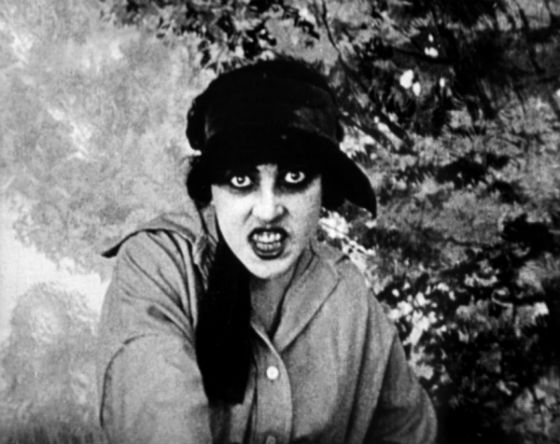
It may be odd to consider a mystery-adventure serial to be an art house subject but the serials of French film maker Louis Feuillade (1873-1925), coming so early in day, created a template for other serials, adventure films, and mystery thrillers.
Feuillade also took film out of the studio and makeshift artificial sets, so prevalent in early cinema, and filmed in real locations. That may not sound like much of an innovation today but it was a big step forward at the time and Feuillade had a positive genius for bringing the locales to dramatic life and for blending the dramatic action into the settings.
Such famed serials as Fantomas (1913-14), Judex (1916, later remade during the New Wave era!) and Tih Minh (1918) could be occupying this slot but the honor goes to Les Vampires, which introduced the concept of the femme fatale, among other things.
The title refers not to the undead but a gang of super-criminals menacing French society during the World War I era (not that the war is mentioned in the serial, though it certainly affected production). During the combined seven hours, there will be intrepid heroes caught in jaw-dropping and dangerous situations, criminal masterminds in disguise, plots against society and its finest citizens, and, deadliest of all, Irma Vep (Musidora), the world’s most seductive and evil woman!
Coming on the heels of the massively successful Fantomas, this one wasn’t as warmly received by the critics but history has reversed that opinion. One can see how Fritz Lang and Alfred Hitchcock, among others, were influenced by this work (and Feuillade’s other films), and more than one surrealist claimed the wild plot influenced them as well.
This film was saved in the nick of time by French film historian Henri Langlois, who rescued the only surviving original print, just before the trash truck was to pick it up and also rescued the by-then long forgotten Musidora, making her the box office girl at his Cinémathèque Française.
3. The Cabinet of Caligari (1919)
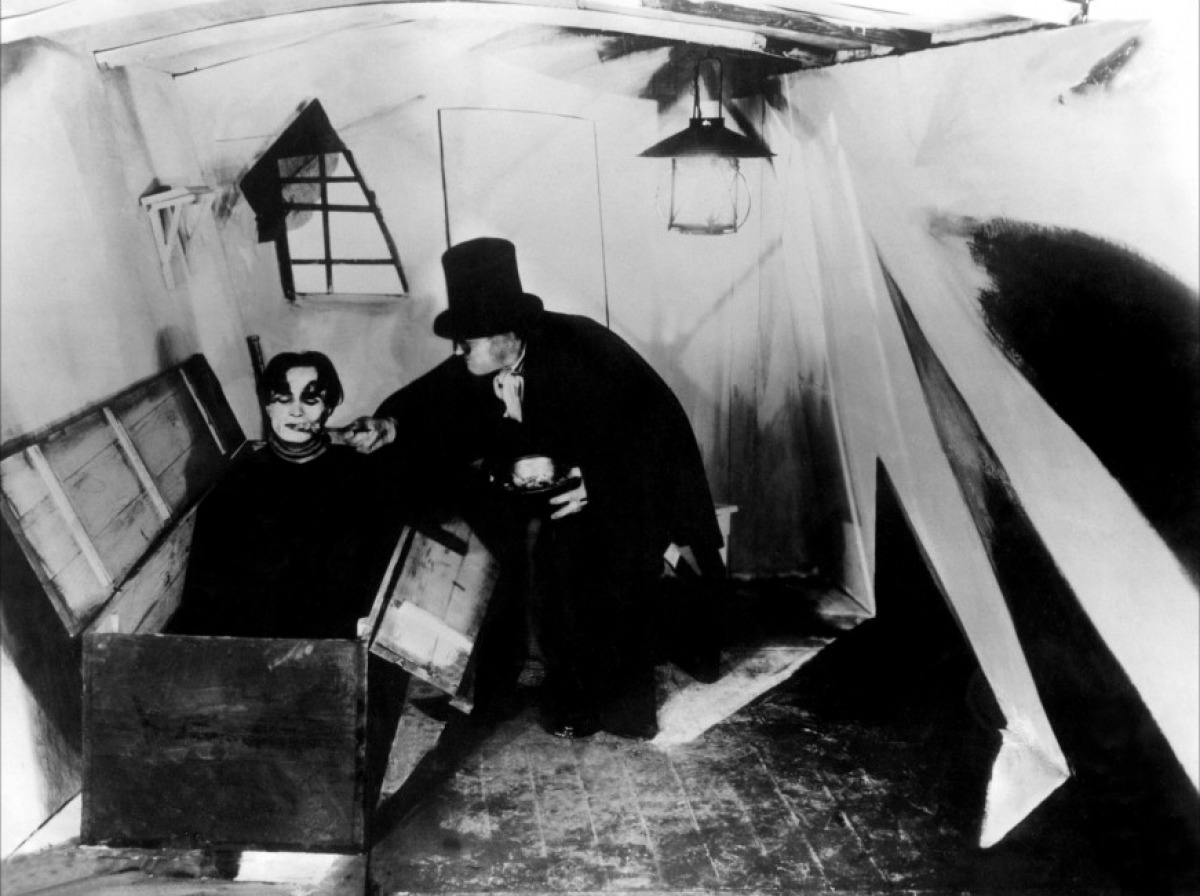
Some films are simply seminal. There are many people who may not know film history or silent cinema or be interested in films from countries others than their own who know, at least by reputation, of The Cabinet of Dr. Caligari. No other film has ever looked quite like it, few have ever been so consciously experimental yet so commercial, or, in its way, so controversial.
The cinema became a de facto salve for the citizens of a defeated post World War I Germany, further humiliated by economic disaster and inflation virtually without parallel in history.
In this bleak environment, two young veterans of the war, Hans Janowitz and Carl Mayer, neither with any previous film experience, concocted a screenplay concerning a disturbing mountebank named Dr. Caligari arrives in a small town with his eerie, hypnotized somnambulist Cesare, who seems to foretell the future but, in fact, under the doctor’s domination, carries out the crimes the doctor bids him to “predict”.
The doctor appears to have an agenda of his own and the hero and heroine somehow cross his radar and Cesare is soon stalking them. Fate, however, provides a surprise or two involving the doctor and the other characters.
The country and the film studio, Decla, were so down and out that the expressionistic style mandated by the script seemed to be out of the question as the deep shadows needed to achieve such a look would have cost way too much in the way of rationed and very expensive electricity.
The designers came up with the idea of painting the shadows on the sets and having the sets, costumes and make-up rendered in the heaviest and most extreme of expressionist style (and expressionism was a popular form in the German painting of the day). The sharp angular sets, basic but powerful costumes and wildly theatrical make-up proved to be perfect for a horror story meant to be the product of a distorted mind.
The main players, Werner Krauss as the doctor, Lil Dagover as the heroine, and, especially, Conrad Viedt as Cesare, were launched on major careers. Not joining on their journey to the top was director Robert Wiene, a last minute replacement for a rising Fritz Lang, who more or less just kept the flow moving and didn’t get in the way (his only other notable film was the original version of The Hands of Orlac in 1925).
However, the real stars were set/production designers Hermann Warm, Walter Reimann, and Walter Rohrig, who contributed unforgettable work.
Decades later film historian Siegfried Kracauer would have the world know that the film, and the many noted German films which followed in its wake, both predicted and enabled the German lead holocaust to come, something debated ever since (and the framing device mandated by studio is often given as evidence for this theory). Much, much has been written about this film but no matter the viewer’s ultimate take on it, it is still very much alive nearly a century later.
4. The Phantom Carriage (1920)
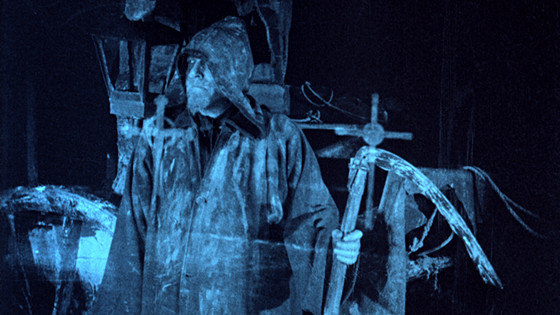
Scandinavia has had a rather uneven cinematic history. There have been long periods when the Scandinavian countries drew little attention in the world cinema market, but there have been highlights among the highest of lights in cinema history.
One of those moments in time was during the silent era in Sweden. That time produced such superior artists as Maurice Stiller and the crowning glory of the nascent Swedish film industry, Victor Sjostrom. Trained in the theatre, Sjostrom, also an actor, had an intuitive grasp of film making and augmented his expert skills with his actors with an uncanny grasp of settings, blending in real locales in many films. He had created a number of remarkably mature films during the nineteen-teens (Ingeborg Holm, 1913, the stunning The Outlaw and His Wife, 1919).
However, his first true masterpiece was The Phantom Carriage (Korkarlen). Set in the form of a fantasy, the film is an amazingly complex (for its time) study of moral degradation and redemption. According to legend, the final person to die before the old year ends will become the collector of souls (herded into the title vehicle) for the coming year.
David (played by Sjostrom himself) is a drunkard who refuses the pleas of a dying Salvation Army worker, Edit (Astrid Holm), to come to her on her death bed. He was once an upright family man until events Edit had witnessesed (and unsuccessfully tried to prevent) had brought him to his downfallen state. David appears to die and is forced into becoming the soul collector and he remembers (via highly skillful flashbacks) the wayward path of his life.
It was no accident that the great Swedish director of a later era, Ingmar Bergman, chose Sjostrom to star in his memorable film Wild Strawberries, which bears a resemblance to this film (and was Sjostrom’s last film). Bergman and many others often cited Sjostrom as a major influence and it’s easy to see why.
He was well ahead of his time and one of the great directors of the silent era. He went to Hollywood with great artistic and mixed box office results (a hit with the first MGM film ever, He, Who Gets Slapped, 1925, and The Scarlet Letter, 1926, but a flop with his finest masterpiece, 1928’s The Wind) and that, combined with discomfort with sound drove him back to the theatre and acting. The loss was the worlds.
5. Haxan (1922)
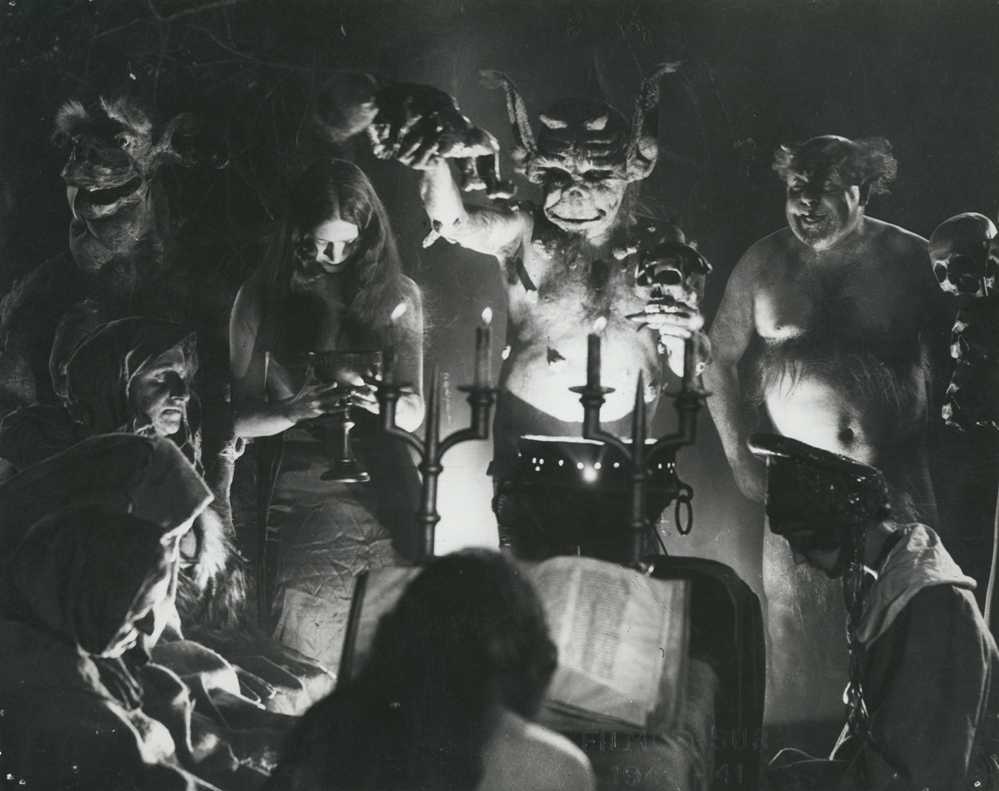
While there have many contenders for greatest cinematic jaw-dropper of all time, perhaps the first and still one of the most jaw dropping is Haxan (Witchcraft Through the Ages). Where on earth could this film have been made in 1922 but Scandinavia? (The film was a Swedish-Danish co-production.)
The director, Danish Benjamin Christensen, had only scored with the fluid and accomplished The Mysterious X in 1914 but somehow got a lot of funding for this pricey effort. Put plainly, the title isn’t kidding.
This film is a study of witchcraft and those who join in with the Devil through the ages. Yes, there are literal devils on view (one played by the director himself) and they and the witches, warlocks and other humans determined to stray from the straight and narrow frolic quite a bit, often nude (yes, nude).
There are also details of occult ceremonies and acts of black magic. The style is wildly exhilarating, though many find the final section where the film attempts to explain it all away as mental illness and using modern psychiatry to define and explain all, to be a letdown. While many sections of Europe embraced the film, to the surprise of no one, the US flatly banned the film (not to be widely seen until the 1960s).
Oddly enough, Christensen came to Hollywood and had some success (mainly directing Lon Chaney) but saw his career fade with the coming of sound, though he went back to Europe and continued his career for quite some time there. However, nothing else in his filmography was in the same league as Haxan. It may be outrageous but it certainly imprinted itself on the collective memory of cinema.
6. Die Nibelungen (1924)
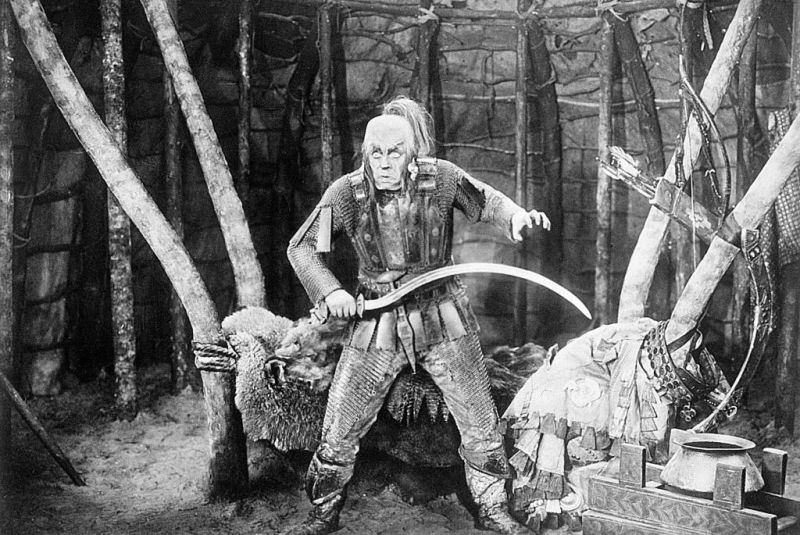
Fritz Lang may have missed out on The Cabinet of Dr. Caligari (due to his commitment to his first big hit, Das Spinnen). However, his career hardly suffered from the loss as he was soon enough going from hit to hit (Destiny, 1921, and 1922’s monumental, two part, Dr. Mabuse). However, for many, he truly arrived with another massive two part epic, Die Nibelungen (Siegfried, Kreimhilde’s Revenge).
The great German studio UFA (the only rival to the studios of Hollywood) wanted to help restore some pride to the defeated nation and chose as a subject these seminal German myths (also adapted as Richard Wagner’s grand opera The Ring of the Niebelung, not the inspiration for this film).
UFA poured precious money into this endeavor and chose the rising directorial star of the film industry, Lang, to bring it to life. And bring it he did! Working with a team of top craftsman, Lang created a stunning magical world for the first film as Siegfried (Paul Richter), raised/apprenticed to mystical dwarfs, gains what he thinks to be invincibility by killing a dragon (remarkable design and puppetry)and bathing in its blood (alas, not noticing the leaf that falls on his back in the process,providing a crucial weak spot ).
He then proceeds to impress the court of nearby Worms with the enchanted treasure he has claimed and takes the hand of Princess Kriemhilde (Margarete Schon), while engendering the jealousy of her weak brother, King Gunther (Theodor Loos) and the contempt of their wary, dangerous uncle, Hagen (Hans Adalbert Schlettow). Siegfried’s underhanded corralling of Valkarie queen Brunhilde (Hanna Ralph) as consort for Gunther will prove his undoing.
The second film, which details Kremhilde’s quest for justice, ending in a Gotterdammerung indeed, is another story altogether. Gone are all the magical trappings and they are replaced by a study of obsession and violence which will point the way towards many other works in Lang’s later career.
While many have been taken with the fanciful first film, the second is truly the more solid work. However, the entire project is overwhelming on the basis of stunning, large scale production design, superior costuming and Lang’s eye-opening staging (using large groups of people as geometric designs).
The actors are well cast (including Lang regular Rudolph Klein-Rogge as a surprisingly civilized Attila the Hun in the second film), though the characterizations, per usual with Lang, aren’t the main feature. This was a huge gamble which paid off handsomely (its only real parallel being the Lord of the Rings films) and once seen is not forgotten.